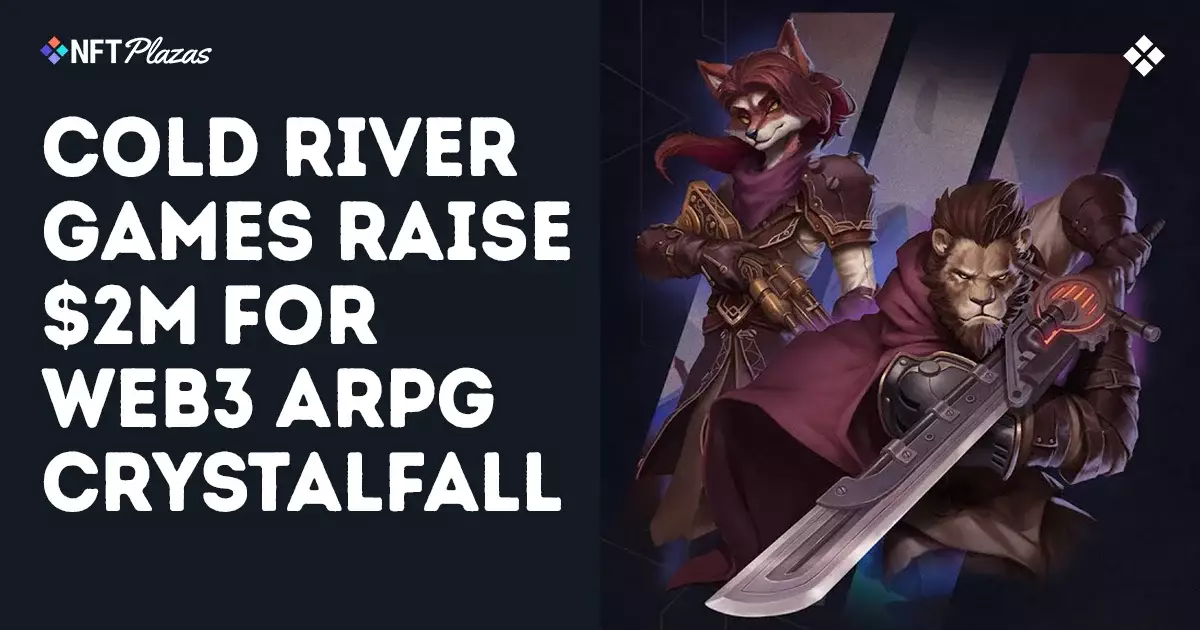In recent years, the gaming industry has been seduced by the siren call of blockchain and Web3 technologies, promising revolutionary changes to how players engage with digital worlds. Yet, beneath the surface of shiny headlines and hefty funding rounds lies a profound skepticism about whether these ventures are truly innovative or merely riding a fleeting trend. The latest example—Cold River Games’ ambitious $2 million raise for *Crystalfall*—serves as a cautionary tale. Despite their impressive pedigree and lofty aspirations, these efforts often reveal a fundamental disconnect: a belief that blockchain integration automatically equates to meaningful gaming experiences.
What’s often overlooked is that blockchain’s real value remains dubious outside niche applications like secure asset ownership or tokenized in-game economies. Most mainstream gamers prize storytelling, gameplay mechanics, and immersive worlds—qualities Web3 gaming presently struggles to deliver convincingly. The investment success of *Crystalfall* might look promising on paper, but it raises the fundamental question: Is this a genuine step forward or just another sparkle in the eye of investors looking for quick profits amid a shaky market?
Crypto Funding and Its Fragile Foundations
The narrative spun by Cold River creators and their financiers echoes a broader hubris: “This is the future of gaming.” But this future feels increasingly tenuous. The digital currency market, which has fueled many blockchain projects, has been in a consistent state of instability. Venture capitalists, once eager to pour money into Web3 gaming startups, are now more cautious—asking for concrete KPIs and long-term viability.
The recent funding round, led by Beam Investments and joined by other notable players like Avalanche Foundation and CoinFund, underscores how heavily some still stake their bets on blockchain’s potential to revolutionize games. Yet, this optimism may be misplaced. Investment flows can create illusionary momentum, masking the reality that most blockchain games, including *Crystalfall*, are struggling to find a sustainable foothold. The question arises: are these projects truly innovating or merely creating an elaborate, expensive veneer for a product that may never mature into something mainstream or genuinely engaging?
Game Design Versus Blockchain Hype
The design of *Crystalfall*, with its old-school ARPG vibe and post-apocalyptic steampunk aesthetic, seems compelling on the surface. Its developers boast experience with major titles like *Path of Exile* and *Diablo*, suggesting technical competence. Still, weaving blockchain into this fabric appears more as a marketing gimmick than an enhancement to core gameplay. The emphasis on loot progression and a “secure game economy” sounds promising but is ultimately an abstraction that alienates traditional gamers.
Gamers craving immersive worlds and deep storytelling might view the blockchain elements—lootable skills, barter systems, and in-game cryptocurrencies—as extraneous distractions rather than value adds. The obsession with token economies risks turning *Crystalfall* into a sandbox for speculative investing rather than an authentic gaming experience. Once the initial hype fades, players will scrutinize whether blockchain features offer meaningful gameplay or simply serve as a revenue tool for developers and investors.
The Myth of Sustainable Web3 Gaming
Many critics argue that Web3 gaming is fundamentally incompatible with the core economics of entertainment. Unlike traditional titles, which rely on engaging content, compelling narratives, and emotional investment, blockchain-driven projects often depend on hype cycles, speculative trading, and “earn-to-play” mechanics that can distort the game itself.
For Cold River, the gamble is clear. They seek to marry old-school RPG mechanics with cutting-edge blockchain features, but history suggests that most such hybrid experiments suffer from a lack of genuine player engagement. The risk is that this approach may attract initial hype but ultimately cannibalizes long-term user loyalty. In the end, the industry’s increasingly crowded landscape offers little room for half-baked ideas rooted more in financial speculation than in gaming excellence.
Is Web3 Gaming a Threat to Traditional Development?
While the allure of blockchain offers tempting promises of digital ownership and decentralized economies, it shouldn’t overshadow the fundamental purpose of gaming: creating compelling, entertaining worlds that captivate players. The pursuit of blockchain integration as a core feature risks diluting authentic game design with financialization strategies that may alienate the very audience they seek to attract.
Moreover, as venture capitalists grow wary and the market tightens, projects like *Crystalfall* face a stark reality: unless they deliver on their promises—meaningful gameplay, durability, and genuine community engagement—they risk becoming yet another failed experiment in a long line of overhyped blockchain ventures. The industry must be cautious not to be seduced by shiny new toys that ultimately distract from the timeless principles of good game design.
In the end, investors and developers should question whether the blockchain bubble in gaming is merely an ephemeral flash or a sign of deeper issues within the industry. As the hype begins to fade, only those committed to authentic innovation—focused on quality, storytelling, and player experience—will survive the reckoning.


Leave a Reply